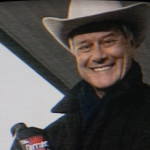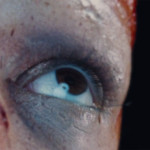L’HYPOTHÈSE DU MOKÉLÉ-MBEMBÉ
AN INTERVIEW WITH MARIE VOIGNIER
With L’hypothèse du Mokélé-Mbembé, artist and filmmaker Marie Voignier invites us to cheap pharmacy viagra question our beliefs and those of others. A film about a mythological monster, of course, it is also a vibrant portrait of a man and his obsession, his buy levitra where beliefs and his determination. Objective and captivating, L’hypothèse du Mokélé-Mbembé transports you into a jungle of possibilities and questions. Below, Ariel Esteban Cayer sits down with Marie Voignier.
——-
With L’hypothèse du Mokélé-Mbembé, you employ a very direct style –permitting the audience to draw their own conclusions with regard to the subject, but also reflecting the elusive nature of the mythical beast itself. Was this your intention from the very beginning or did this approach come high quality cialis as you were making the film?
I did not see myself approaching this subject otherwise, this is how I usually work: open with the film (or whatever) a field of ideas that generates more questions than it answers. From the very beginning, the point was not to make a dossier of research on Mokélé-Mbembé nor was it supposed to be a biopic of Michel Ballot. It isn’t the man or the beast that interests me but the relationship, the complex relationships one weaves with the other via a third-party culture.
The film follows quite a character. How did you meet Michel Ballot and how, from this relationship, did the idea to make a film about his cryptozoological journey come about?
I started getting interested in cryptozoology because of Stefanie Baumann, a friend and PhD in philosophy
Cryptozoology is the science of hidden animals that are as of now unrecognized by mainstream science. The cryptozoologists believe in the existence of somewhat unlikely animals, basing their beliefs on representations, stories, legends. What got me interested in cryptozoology is that it that it challenges our notions of belief and truth. Do we believe in that Mokélé-Mbembé exists? Stories, reported appearances, does that make it real? Here we find the same issues as those of film and representation. With Stephanie Baumann, we decided to attend a cryptozoology conference in Berlin. One talk showcased the research of Michel Ballot. I was very interested by the context, the method and the character of the explorer. His physical resemblance to the actor Klaus Kinski seemed promising. I contacted Michel Ballot who later received us at his home near Nice. After I explained the intentions of my film: to share his research all the while trying to understand his point of view and to get a closer look at what he believes. We had an initial shoot that lasted two weeks during which I was able to assess the difficulty of the terrain and meet the films’ protagonists.
You followed Mr. Ballot during his 2010 expedition and – I imagine – shot hours and hours of footage – an exercise in patience in itself, right? How was this experience – both in technical terms (shooting, sound) as well as emotional – from behind the camera?
I did not exactly follow Michel on one of his expeditions. Instead, we organized an expedition together to make this film, which is not quite the same thing. We were in areas that Michel is very familiar with, in order to find witnesses who have seen the beast and film their testimonies. So there was a lot of staging. But I
It was also more challenging for Michel. So of course, we had hours of footage. But my team (Stephanie Baumann and Thomas Fourel) and I were immediately consumed by what was happening. The conditions were rough: 3 hours of electricity daily in the evening, no phone calls, lots of rain, problems with equipment, a very poor diet, etc… the list is long but this isn’t what stuck with me. I was more shaken by, how would I describe it?, the culture shock, the post-colonial climate of it all? We were constantly asking ourselves what we, a small group of white people lost deep in the jungle, were doing there. This feeling that no one knew us, we had no place or at least certainly not one we wanted: we wanted to be considered (ex-)colonists (Michel to his great dismay is called “boss”) or possibly missionaries “I was often referred to as “sister”), or even safari hunters. No matter what, we couldn’t distance ourselves from our historical legacy (Cameroon is a former British and French colony). As “the French” we could not be considered as anything but former colonists.
Faced with your beautiful wide shots of the Cameroonian Jungle, the audience becomes an investigator in its own right and not simply a receiver: do you consider this the optimal role of your documentary’s audience? Did you want to steer the audience away from complacency?
I think spectators, whoever they might be (I’m talking about both documentary and fiction here) can always be active viewers if they want to be. But it is true that it is to a certain degree solicited. I don’t make films with the audience in mind. I make the film firstly for me, thinking about what I want to see on screen. So I always try to maintain a certain tension, a pacing, a reflection simply so I don’t get bored myself.
I am fascinated by the aesthetic of degraded video. Can you tell me about the personal footage that Michel Ballot shot himself and your choice to integrate it into the project?
From our very first meeting, Michel showed me the films he shoots during his expeditions. Since the beginning of his travels, he’s documented his encounters and reflections in the form of a video diary. He never had a desire to edit this footage that was otherwise simply rushes in a closet. It was clear to me that we needed to include it, not only because these films are part of his research, but they bring an added dimension to our perception of Michel: we see him when he is alone and more fragile. Furthermore, this footage was shot in a format that no longer exists, VHS-C, which adds historical depth to his work, contextualizing it.
These images seem to punctuate the film and add a certain mystique, a history, even a mythology to M. Ballot and his project. The chronicling of the obsession and dedication to your subject when facing the mythical creature seems almost more important than the creature itself. Am I wrong?
You’re absolutely right. The film is not at all about the creature itself, but, as the title suggests, it’s about the hypothesis that someone has made about its existence, and all that this hypothesis entails. The notion of hypothesizing the impossible is what interested me. It’s more of a philosophical attitude than it is zoological.
The convictions of both the Pygmies and Michel Ballot often merge into each other. Can you discuss the central theme of belief?
Belief is what Michel Ballot, the Pygmies and the spectator all have in common. Except they don’t believe in exactly the same thing, and it’s in this film that this comes together. Michel believes in the beast’s existence because of clues and evidence he has ammassed. The Pygmies are also convinced of the beast’s existence, but for us non-Pygmies it’s difficult to understand the degree of this existence: in the past? In a specific cosmogony? In local zoology? Whereas the viewer already believes in cinema, he accepts the illusion (whether in fiction or documentary) and in doing so believes whatever he’s shown. At the end of the film, whether he actually believes in the existence of the beast or not is something else entirely…
I dare to ask this last question: do you believe in Mokélé-Mbembé? Has the shooting of this film influenced your beliefs?
Of course, to delve into the making of this film I had to ask myself that question! What I found most fascinating and what finally made me decide to make this film is that, after the first time I visited Michel Ballot to see if there was enough material here to make a film, I came away saying that, for four hours, I was absolutely convinced that Mokele-Mbembé existed. Michel Ballot and the evidence he presented me with allowed me to do so. And to be clear, it’s not because Michel convinced me with strong arguments or evidence of the beast’s existence. It’s that for four hours, as if it were a long film, I just accepted his hypothesis. I was immersed in the world of Mokele-Mbembé with Michel. That’s what a hypothesis is: it has to be accepted initially so that one might then verify it, or not, and it can take a long time.
——
L’hypothèse du Mokélé-Mbembé will be presented Saturday July 28th at 14:50 in the J.A. de Sève theater.
Read Michel Ballot’s expedition blog HERE.

 July 28, 2012
July 28, 2012  No Comments
No Comments










